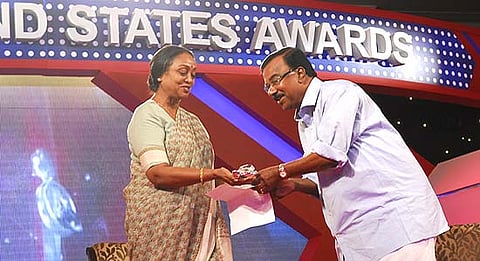Facets To The Shine
Beyond the forsaken ‘Bimaru’ states, there is a hidden map of deprivation in India

Confirming what is already well-known, leaders of the best performing states, Goa and Kerala, attributed their success to diminishing, to the extent possible, the gap between policy intent and actual development. “Development is not just about investment and industry. Today, you must either perform or perish on all fronts—social, economic and political,” says Goa chief minister Digambar Kamat. Those that came a cropper express another concern—development policies designed by the Centre often fail when they wind down to implementation at the state level. Few were surprised that Goa and Kerala swept up the best small and large state awards for the second year in a row, but the performance of other states was not as easy to predict.
Chhattisgarh, for instance, got top honours for employment and Uttar Pradesh for the best judicial governance. Another surprise—and this led to an energetic debate during the awards ceremony—was Gujarat’s bagging the award for “citizen security” among large states. While Gujarat’s minister for home affairs, Amit Shah, presented National Crime Records Bureau (NCRB) data since 1991 to set the award in a justifying context, his presentation omitted data for 2002, when over 2,000 people, mostly Muslims, died in riots. “If you talk about fear among the minorities, there is none in Gujarat, unless they listen to what the media says,” Shah told the audience.
However, Gujarat’s performance on social indicators is weak despite improving GDP and advancing industrialisation. “Politically, the Gujarat government is oriented towards capitalism, and the state has industrialised—but it hasn’t become more equitable or safe,” argues Indira Hirway, director of the Centre for Development Alternatives (CDA) in Ahmedabad. According to a yet-to-be-published CDA report, Gujarat stands out among 20 large Indian states for slipping up on the rate by which it is able to reduce poverty. It has also fallen on the Human Development Index.
The idea that all-round social development—such as improved health standards—will trickle down from large-scale industrialisation is indeed contentious. “To alleviate poverty you need tailor-made programmes. You need to generate rural power, encourage handicrafts, design subsidies, develop public distribution and spend on healthcare. It can’t be done by building factories alone,” says N.C. Saxena, who was earlier with the prime minister’s National Advisory Council.
To an extent, smaller, less prosperous states such as Sikkim—which won the water and sanitation award—can blame allocation of funds for their laggard performance on many fronts. However, it’s also true that most opposition-ruled states tend to feel discriminated against. This clashes against the major political parties’ fear that India has already adopted a more federal character than earlier envisaged. This “unintended federalism” has its critics, though many political economists push for greater transparency rather than an overhaul of the system.
With aspirations on the rise in states that have traditionally been weak, industrially and on social development, there are chances that they will seek to deny the issues rather than address them—this is as true of violence in Gujarat as it is for the ‘Bimaru’ states when it comes to overall development. Noted demographer Ashish Bose, who coined the term “Bimaru” in 1985 to refer to India’s perennially under-developed states—Bihar, Madhya Pradesh, Rajasthan and Uttar Pradesh—says that, in fact, the states that performed the worst on social indicators decades ago are still laggards.
“The more data I get, the more I am convinced that Bimaru states remain poor performers,” says Bose. “But there’s more to it. In states such as Punjab or Haryana, which are not classified as Bimaru, and which have done well economically, the social indicators are terrible.” This is particularly true in Haryana, where, despite industries and land development, caste panchayats dominated by the 40 per cent Jat population repress women and thwart progress.
The contradictions and unexpected results are also a call to look beyond what a single result or award can throw up. K. Narayanan Nair, director, Centre for Development Studies, Thiruvananthapuram, says, “Indicators favour Kerala, but how far will this sustain, given the slow growth in agriculture, industry and infrastructure, progressively poor quality education and failing health systems?” The truth is, real development in India has been spectacular in pockets, but mostly discontinuous. That is the real challenge for the diamond states.
By Pragya Singh and Lola Nayar
Tags